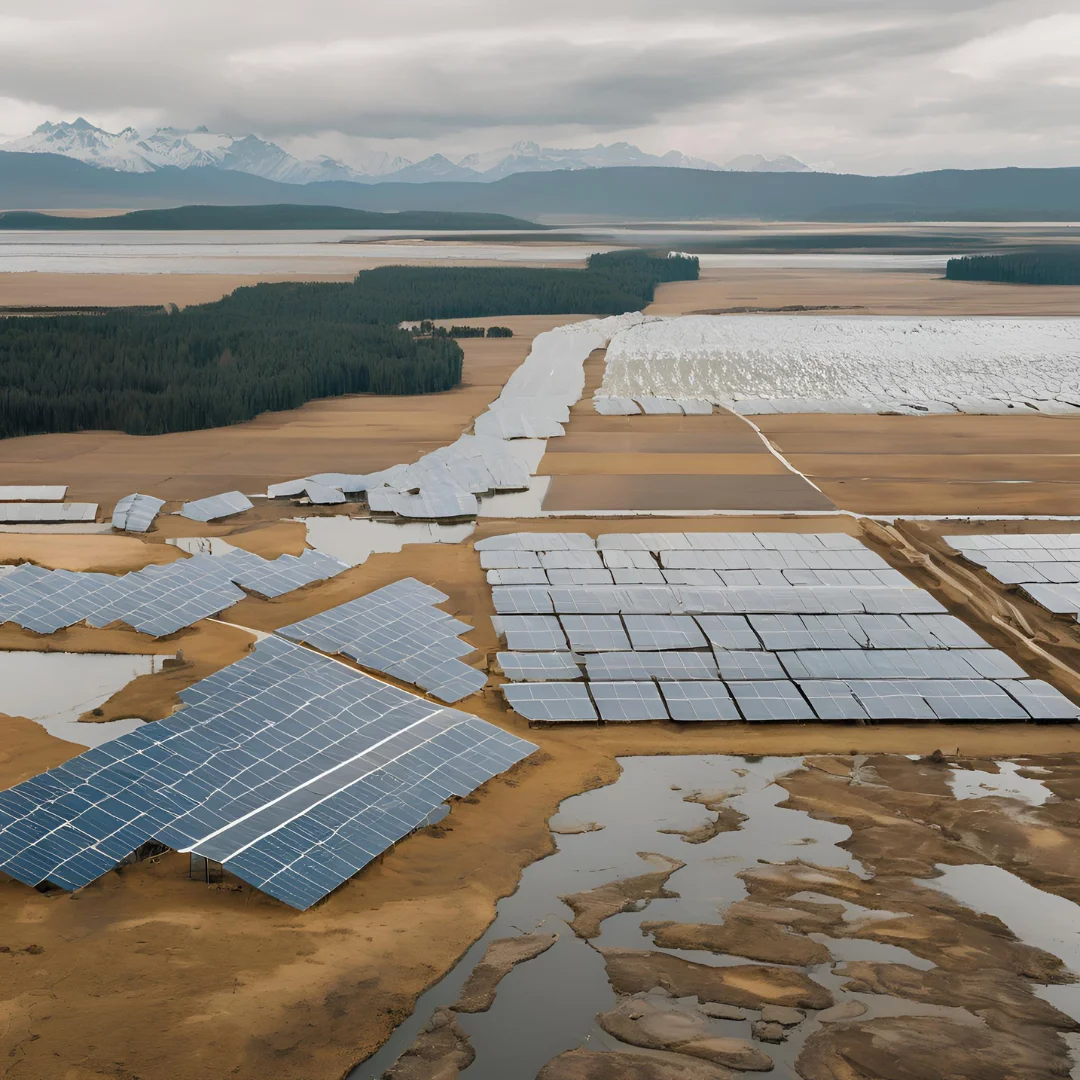One of the most important worldwide issues of our day is climate change, which poses serious risks to economies, ecosystems, and human welfare. The Earth's climate system is changing at a rate never seen before, mostly as a result of human activity increasing the amount of greenhouse gases in the atmosphere. Rising sea levels, more frequent and severe weather events, and disruptions to human and environmental systems are all results of these changes. Sustainability has become a central idea as the globe struggles with the effects of climate change, directing efforts to strike a balance between the requirements of present and future generations in terms of the environment, society, and economy. This blog examines the factors contributing to climate change, its effects, the value of sustainability, and the creative solutions being used to lessen its effects and prepare for its effects.
Understanding Climate Change
The Science of Climate Change
Long-term changes in temperature, precipitation, wind patterns, and other components of the Earth's climate system are referred to as climate change. Although there have been naturally occurring variations in Earth's temperature across geological time periods, human activity is mostly responsible for the current trend of rapid warming. Leading scientific authority on climate research, the Intergovernmental Panel on Climate Change (IPCC), has identified numerous important factors contributing to recent climate change:
-
Greenhouse Gas Emissions: The amount of greenhouse gases (GHGs) in the atmosphere has considerably increased as a result of deforestation, industrial operations, burning fossil fuels (coal, oil, and natural gas) for energy. The main greenhouse gases (GHGs) that contribute to the enhanced greenhouse effect, which traps heat in the Earth's atmosphere and causes global warming, are carbon dioxide (CO2), methane (CH4), and nitrous oxide (N2O).
-
Land Use Changes: Because the Earth's ability to absorb CO2 is diminished by deforestation and changes in land use, such as urbanization and agricultural growth, these factors exacerbate climate change. Large volumes of CO2 are sequestered by forests, which function as carbon sinks. When forests are destroyed, the carbon is released back into the atmosphere.
-
Aerosols and Other Pollutants: Aerosols and other pollutants produced by human activity can also affect the climate. Certain aerosols, like sulfate particles from burning fossil fuels, reflect sunlight and cool the environment, whereas other aerosols, like black carbon, absorb heat and cause global warming.
Evidence of Climate Change
The evidence for climate change is overwhelming and well-documented. Key indicators include:
-
Global Temperature Rise: Since the late 19th century, the average surface temperature of the Earth has risen by about 1.2°C (2.2°F). With 2020 and 2016 matching for the highest temperatures, the last ten years have been the warmest on record.
-
Melting Polar Ice and Glaciers: Globally, glaciers are melting, and the area and thickness of the Arctic sea ice have drastically decreased. The melting of the Antarctic and Greenland ice sheets is causing sea levels to increase globally.
-
Sea-Level Rise: Since the late 19th century, the sea level has risen by around 20 cm (8 inches), and in recent decades, the rate of growth has accelerated. This rise is brought on by the melting of ice sheets and glaciers as well as the thermal expansion of saltwater as it warms.
-
Extreme Weather Events: Heatwaves, hurricanes, droughts, and heavy rainfall are examples of extreme weather phenomena that are becoming more common and intense due to climate change. The effects of these occurrences on ecosystems and communities may be catastrophic.
-
Ocean Acidification: Heatwaves, hurricanes, droughts, and heavy rainfall are examples of extreme weather phenomena that are becoming more common and intense due to climate change. The effects of these occurrences on ecosystems and communities may be catastrophic.
The Impacts of Climate Change
Environmental Impacts
Natural systems are widely being disrupted by climate change, which has an impact on ecosystems, biodiversity, and the services they offer. Among the major effects on the environment are:
-
Loss of Biodiversity: A number of stressors, including habitat loss and changing climatic conditions, are putting many species in danger of going extinct. Risk increases for species that are unable to relocate to more favorable habitats or adapt. For instance, coral reefs are extremely susceptible to ocean acidification and warming, which has serious consequences for marine biodiversity.
-
Disruption of Ecosystems: Ecosystems and food webs are being disrupted by climate change, which is also changing species distribution and behavior. The timing of biological processes like migration and breeding can be impacted by changes in temperature and precipitation patterns, which can cause imbalances in ecological interactions.
-
Changes in Water Resources: Freshwater resource availability and quality are being affected by climate change. Many regions' water supplies are being impacted by melting glaciers and decreasing snowpack, and more frequent and severe droughts and floods are being caused by changing precipitation patterns.
-
Forest Fires and Deforestation: The frequency and intensity of forest fires are increasing due to rising temperatures and shifting precipitation patterns, which is causing trees to burn down and releasing stored carbon. Land use changes cause deforestation, which worsens climate change and diminishes biodiversity.
Socioeconomic Impacts
Beyond just the environment, businesses, civilizations, and human well-being are all impacted by climate change. Important economical effects consist of:
-
Food Security: Agriculture productivity is being impacted by climate change, which has consequences for food security. Extreme weather events, variations in precipitation, and temperature can all lower crop yields and mess with food supply systems. Particularly in emerging nations, areas with a strong agricultural base are especially vulnerable.
-
Human Health: Significant health risks associated with climate change include fever-related disorders, respiratory problems brought on by increased air pollution, and the expansion of vector-borne illnesses like dengue fever and malaria. Injuries, homelessness, and mental health issues can also result from extreme weather events.
-
Economic Disruptions: Climate change has a wide range of effects on the economy. Extreme weather-related infrastructure damage, supply chain disruptions, and decreased productivity in climate-sensitive industries like agriculture and fisheries can all have a substantial financial impact.
-
Displacement and Migration: Displacement and migration are being exacerbated by resource constraint, extreme weather, and rising sea levels. Particularly vulnerable areas include coastal towns, tiny island nations, and desertification areas. The displacement caused by climate change presents difficulties for both the displaced people and the host communities.
Conclusion
Since climate change and sustainability are closely related issues, immediate and concerted action is needed at all societal levels. We can endeavor to create a future that is more robust and egalitarian by comprehending the science behind climate change, acknowledging its effects, and adhering to sustainability ideals. There are numerous ways to support climate solutions, including individual acts, policy changes, and technical innovation. Prioritizing climate action and sustainability as we go forward will be essential to preserving the environment for coming generations and advancing everyone's well-being.




